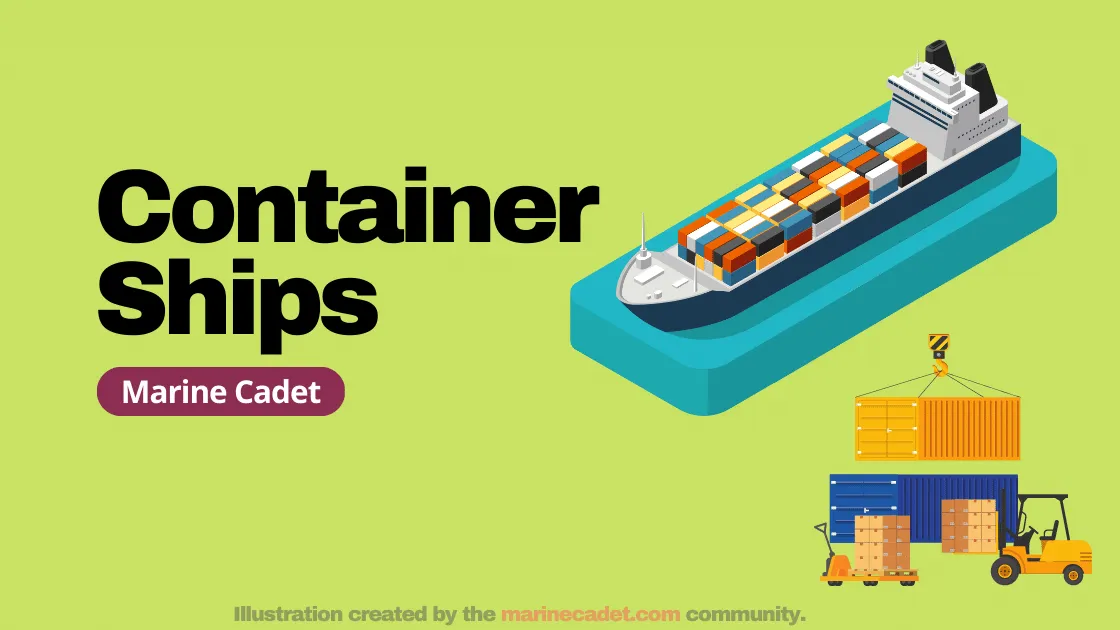
Container Ships
Container ships are large vessels designed to transport shipping containers filled with various types of cargo. These ships have cranes and other specialized equipment to load and unload the containers. They are efficient and cost-effective way to move large quantities of goods across the ocean. Container ships are a vital component of global trade, transporting verything from manufactured goods to raw materials. They typically operate on set routes between major ports, with the most significant ships capable of carrying thousands of containers at a time.
The Business Volume of Container Ships in the Market
These ships make up a significant portion of the global shipping market. According to various sources, container ships account for around 60-65% of the total volume of seaborne trade. They are also responsible for a large percentage of the total revenue generated by the shipping industry. The market for container ships is highly competitive and is dominated by a few large companies, with the top 10 container shipping companies controlling around 60% of the global market share.
It’s worth mentioning that the market and the percentages mentioned above are subject to change in the future, depending on many factors, such as the global economy, trade agreements, and technological advancements.
History of Container ships
The history of container ships can be traced back to the 1950s when the concept of standardizing and containerizing cargo emerged. The idea was first proposed by Malcolm McLean, an American trucking entrepreneur, envisioned a system where cargo could be quickly loaded and unloaded using standardized containers. In 1956, McLean’s company, Sea-Land Service, transported 58 shipping containers from Newark, New Jersey, to Houston, Texas, using a converted World War II tanker, the Ideal X.
This marked the first successful use of containerization in shipping, and the concept quickly caught on. In the following years, container ships were developed and built specifically to transport containers, and ports worldwide were modified to accommodate the new vessels.
By the 1970s, containerization had revolutionized the shipping industry, making it faster, cheaper, and more efficient to transport goods across the ocean. Container ships became more extensive and specialized, with the ability to carry thousands of containers simultaneously. Today, container ships are vital to global trade and commerce, with millions of containers transported across the ocean each year.
It’s worth mentioning that containerization has changed the way cargo is transported and significantly impacted the shipping industry and global trade.
Technical information about Container Ships
Container ships are large, specialized vessels designed to transport shipping containers filled with various types of cargo. They typically have several key technical features that make them suitable for this purpose:
Size and Capacity
Container ships are some of the largest vessels in the world, with the largest ones measuring over 400 meters in length and having the capacity to carry over 20,000 TEUs (twenty-foot equivalent units) at a time.
Container Cranes and Other Specialized Equipment
Container ships are equipped with cranes and other specialized equipment to load and unload the containers. These cranes can lift 40-50 tons of weight and can pack and unpack containers at a rate of around 30-40 TEUs per hour.
Propulsion System
Large diesel engines typically power container ships. The newest ships have a hybrid propulsion system that combines conventional engines with electric propulsion, reducing fuel consumption and CO2 emissions.
Navigation and Communication Systems
These ships are equipped with advanced navigation and communication systems, including radar, GPS, and automatic identification systems (AIS). These systems help the ship navigate safely and communicate with other vessels and port authorities.
Safety and Environmental Regulations
It must comply with various international safety and environmental regulations, such as SOLAS (Safety of Life at Sea) and MARPOL (International Convention for the revention of Pollution from Ships).
It’s worth mentioning that the technology and design of container ships are constantly evolving to meet the demands of the global shipping industry and new container ships are being built with even more advanced features and capabilities.
We have prepared a more detailed article about Most Common Types of Ships? Go to detailed topic ▶ Most Common Types of Ships?Frequently asked questions
What are container ships called? It also called as boxship or spelled containership but the most common name is container ship.
How much can a container ship carry?
How many containers are on a container ship depends on container sizes because there are different sizes of containers.
What’s the largest container ship?
According to wikipedia list, the large container ships are MSC Irina and the MSC Loreto with maximum 24,346 TEU.